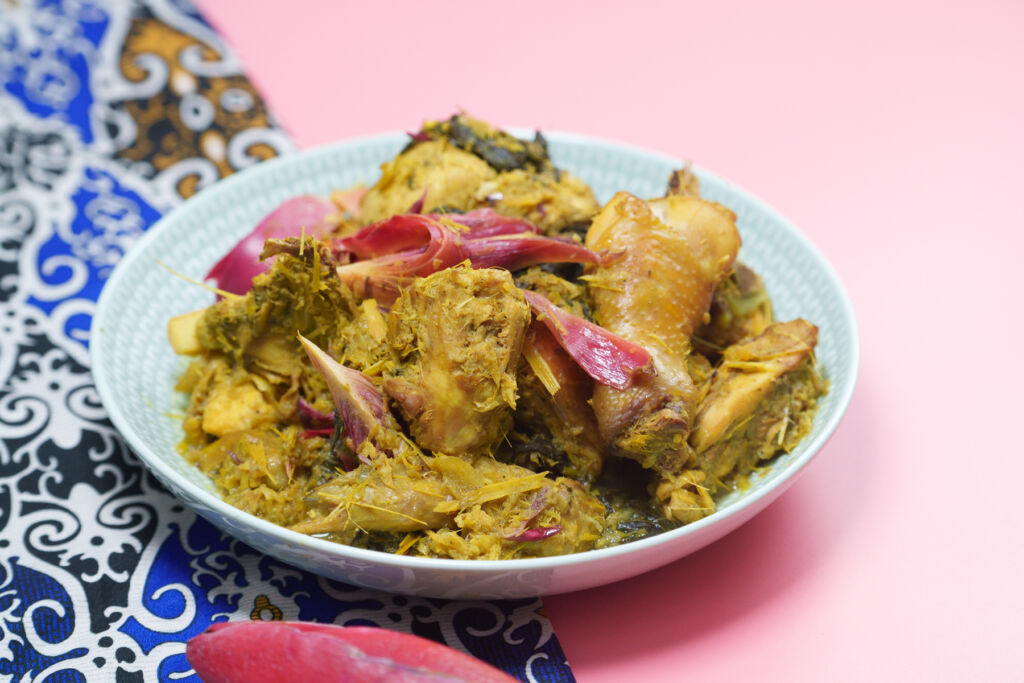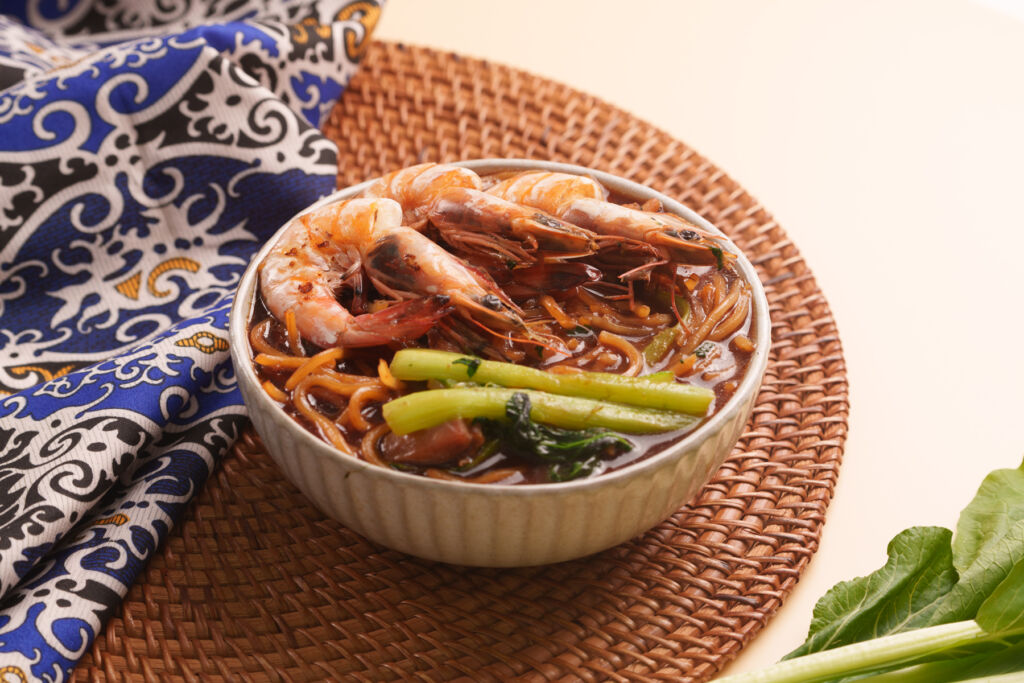

Sarawak comes alive in June every year as the Dayak people celebrate Hari Gawai, a festival that gives thanks for a bountiful harvest and its people’s deep connection with the land. In this feature, we look at some of the authentic, traditional dishes that unite Sarawakians.
Hari Gawai is much more than an excuse for the Dayak community to hold a celebration. It is a reminder and a showcase of Sarawak’s incredibly rich culture. A big part of the state’s culture and heritage is born from food, so for this feature, we get an authentic taste of how to celebrate by talking to Sarawakian Adeline Tang, the co-founder of Freshable.
Like many Sarawakians, Adeline is based in and around the Klang Valley. We wanted to know what Hari Gawai means to her, and she told us, “Every June is filled with nostalgia and intense homesickness. I think this might be true for many other Sarawakians who live outside the state. But of course, being Malaysian, the one thing I miss most is authentic Sarawakian food.”
Adeline explained there are four distinctive Sarawakian dishes that best represent the state.
One dish that holds a special place in the Gawai festivities is Pansoh Ayam (main image above), also known as Manok Pansoh, a traditional Sarawakian delicacy cooked in bamboo.
It involves cooking chicken in a freshly cut bamboo stalk along with aromatics like onions, ginger, lemongrass, garlic, torched ginger flower, and galangal. The bamboo is roasted over an open fire, infusing the chicken with a distinctive flavour.
As the preparation of Pansoh Ayam takes a considerable amount of time, expertise, preparation, and the right space for building a fire, a proper Pansoh Ayam is difficult for most living in concrete jungles like Klang Valley to achieve at home.


Another dish that’s unique to the state is the Sarawak Laksa, which has origins dating back to the 20th century. The creation of this noodle soup is still somewhat of a mystery. Most believe Chinese immigrants in Sarawak developed it, and it was then made popular by the Tan family in the ’60s and ’70s with their development of the Swallow brand laksa paste.
This laksa is known for its complex flavours. It stands out from similar dishes such as the curry laksa and asam laksa with its use of the sambal belacan, a pounded chilli paste made with fermented shrimp paste, which lends the dish a unique aroma and great flavour depth.
Depending on who you ask, the most authentic Sarawak laksa paste has a vibrant orange hue and contains between 20-36 (or more!) ingredients, including garlic, shallots, chillies, candlenuts, and dried shrimp.
Topped with shredded chicken, prawns, bean sprouts, and omelette slices, the Sarawak laksa’s hallmark is its thick and creamy soup. As with all laksas, laksa paste is the most important component to getting the taste right.
However, Adeline explains that an authentic Sarawak laksa paste can be quite rare to find. “Sarawak laksa paste involves many ingredients, so it can be more difficult than you expect to get the taste right if you made it yourself. You could sometimes find Sarawak laksa paste here, but it doesn’t always capture the authentic taste.”
Ka Chan Ma (Motherwort Herb Chicken Soup) is another dish unique to Sarawak. The chicken soup dish features the motherwort herb, which grows indigenously in the state and has been used in various cultures for its medicinal properties.
Adeline says, “Ka Chan Ma is an acquired taste because the motherwort can be quite bitter. But over the years, I’ve found an appreciation for the complex, bitter yet floral flavour, as well as its health benefits.”
The herb is thought to aid in mood regulation and reduce anxiety. As the dish is made with motherwort, ginger, wine, and other spices, it is also believed to relieve gas and improve blood circulation. The nourishing chicken soup is popular among the masses due to its unique flavour and nutritious qualities, and health benefits.
Another unique Sarawakian dish that produces great memories for Adeline is Ding Pian Ho (鼎边糊). This Foochow dish’s name roughly translates to “wok edge paste”, which refers to how the noodles are made. A flour slurry is poured around the sides of a wok with soup. When the noodles are cooked, it is scraped back into the wok while some of the slurry has cooked in the soup. The result is a cross between flat rice noodles and congee.
For many Sarawakians who have grown up watching hawkers scraping their woks to make a bowl of Ding Pian Ho, it might seem a mundane thing. Adeline told us about her fascination with watching the hawker making these noodles, which, without a doubt, is one of the most interesting ways of making a flat noodle.
On Hari Gawai this year, Adeline shares the feelings of all Sarawakians missing the taste of home. For her food business, Freshable, Adeline was inspired by her roots and her longing for authentic food from Sarawak, and it is why she has chosen to feature her home state’s cuisine in a monthly special this June.
“I felt that Hari Gawai was the best occasion to put a spotlight on Sarawakian cuisine. There’s so much to be said about how unique our food is, but I would rather put a bowl of Sarawak laksa in front of someone and let them experience it themselves”.
As for Sarawakians who find themselves homesick this June, like Adeline Tang, “There’s so much comfort that a hot bowl of food from home brings me. I hope to share with fellow Sarawakians the taste of home while away from home.”
Adeline Tang (above) co-founded Freshable, an innovative meal kit delivery service that sends meal kits of curated cuisines right to your doorstep. The idea is that subscribers pick a dish of choice, and Freshable sends you meal kits consisting of pre-cut and measured ingredients for the recipe.
This month’s Sarawak menu features locally-sourced ingredients from Sarawak and adapted recipes for home cooking. She added that she aims to bring Sarawak’s best dishes to doorsteps in Klang Valley.
“When I first started out with my business, it was driven by my passion for food. And the Sarawakian food I grew up with and learned to love was a big part of that. As I pay homage to my roots by featuring my favourites in this month’s special, I think things have come full circle”.
Whether you are new to Sarawakian cuisine or you’re homesick and long for a taste of home, get your taste of Sarawak now on Freshable’s website at https://freshable.co/ and follow them on social media at Instagram and Facebook.
Read more food news, guides and first-hand dining reviews here.
